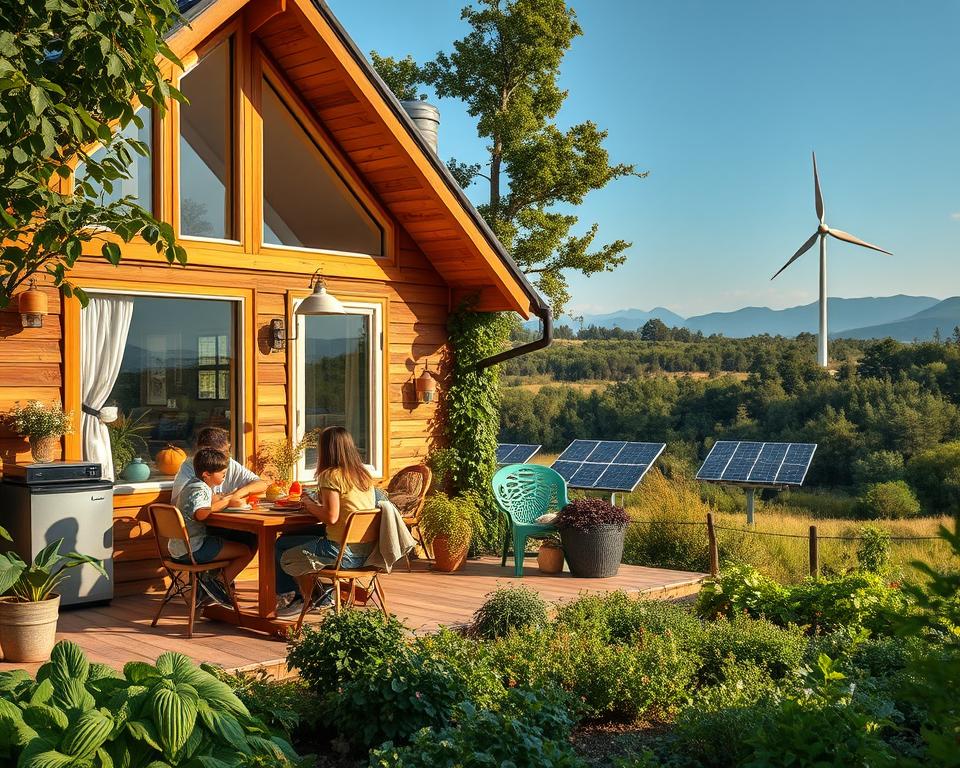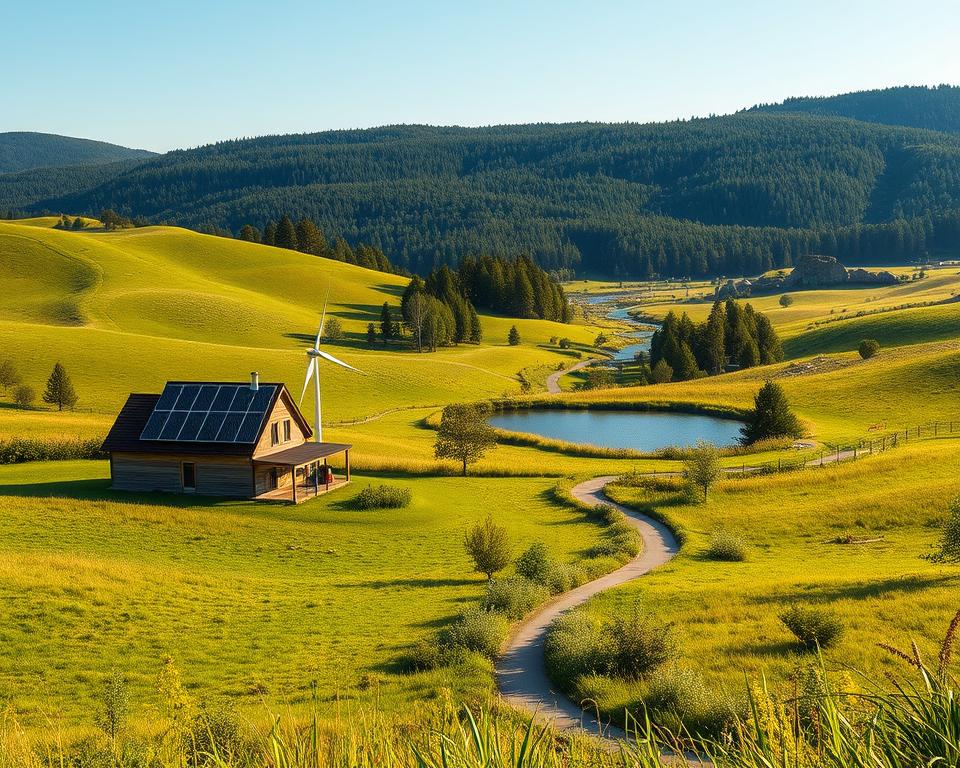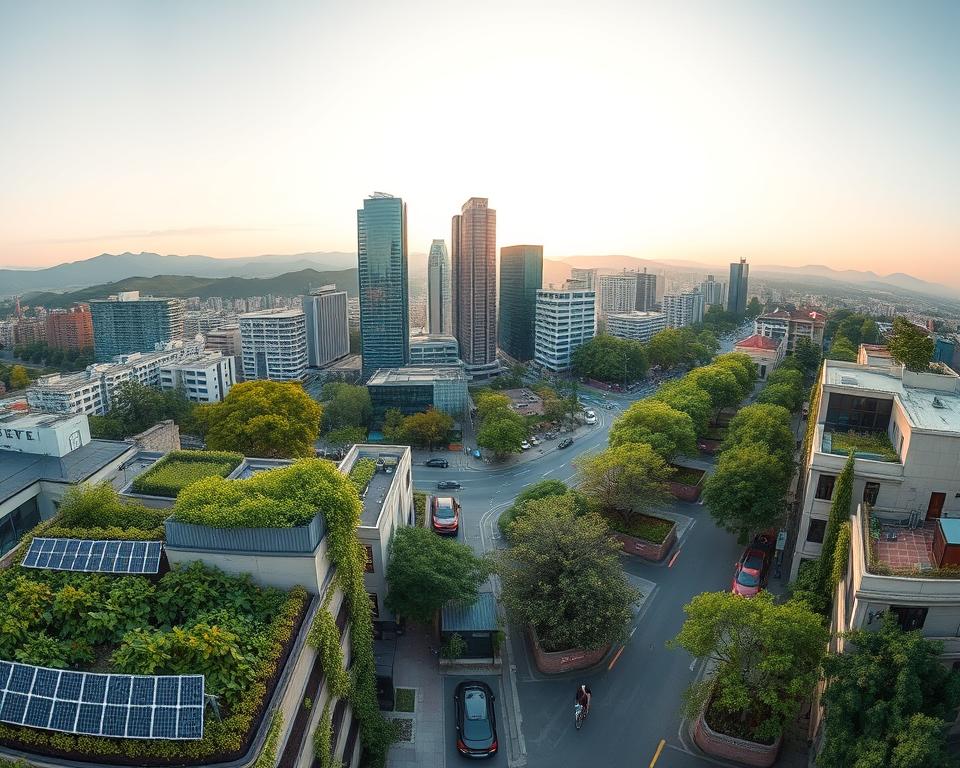Anúncios
start sustainability beginner — do small, steady moves really change the world? You might think one person can’t make a dent, but one clear choice often leads to another.
This friendly guide frames sustainable living as a simple process, not a test. Notice current habits first, then pick a few realistic changes that save time and money. The tone is practical and nonjudgmental so you can learn as you go.
You’ll find short, budget-friendly tips that move from mindset to actions at home and in daily life, then to local community impact. The pieces here link personal choices to the wider environment and climate change, showing how many small steps by many people add up. For more context on impacts and easy actions, see this informative resource at an environment-friendly lifestyle guide.
By the end, you’ll feel ready to take one step today — whether that’s sorting waste, choosing lower-waste food, or saving water — and to build a way of life that fits your family and values.
Why Your First Steps Matter Today
Your early choices set the tone for lasting habits and real impact. Small changes are not about perfection; they are a calm, steady process that makes future actions easier. Think of this as a friendly primer on sustainable living you can follow without replaying your whole routine.
Anúncios
Shift your mindset: progress over perfection and the “low-waste” path
Low-waste living focuses on reducing trash at the source. Use what you already own, refuse freebies, and choose fewer, durable items. A simple first step is carrying a reusable cup or bag so you skip single-use items without buying much.
Learn the 5Rs: Refuse, Reduce, Reuse, Repair, Rot before you recycle
The 5Rs guide daily choices in a clear order. Refuse extra packaging, Reduce what you bring home, Reuse containers and jars, Repair clothing or gadgets, Rot food scraps through composting. Only then recycle what remains.
- Refuse marketing freebies and extra bags.
- Repair a phone case or mend a sweater to extend life.
- Start a small countertop compost bin for kitchen scraps.
Spot greenwashing so your money supports real change
Companies sometimes use vague claims like “eco-friendly.” Look for clear disclosures and third-party standards such as COSMOS Organic. Check materials, repairability, and refill options before buying new products.
Anúncios
“When you make a few practical choices, you invite others to learn with you.”
Remember: begin with two manageable changes, avoid tossing existing plastic or swapping one disposable for another (paper for plastic), and share what you learn. Your actions inspire others and steer money toward real change that benefits people and the planet in this practical guide for any beginner.
Cut Waste at Home Without Wasting Money
A few practical tweaks at home can slash trash and free up cash. Start with simple sorting and low-cost swaps you’ll actually use. Household choices reduce landfill methane and help the wider environment.
Segregate waste and set up easy composting
Three bins make sorting simple: wet/organic, dry/recyclables, and hazardous. Keep a small countertop pail for fruit and coffee grounds, then empty to a backyard pile or a community bin.
Organic matter in landfills produces methane, which is far worse than CO2 over time. Composting at home cuts that impact and yields useful soil for plants.
Reduce single-use plastic with durable swaps
Pick one or two items to change first: a sturdy water bottle, a washable tote, and produce bags. Use what you already own—repurposed jars and bottles save money and reduce needless products.
- Keep recyclables clean and dry to avoid contamination.
- Choose long-life cleaning items: reusable cloths and a scrub brush with replaceable heads.
- Track your waste for a week to spot easy wins and save time on errands.
“Small, steady changes at home add up and model this way of living for people you share space with.”
Lower Your Footprint in Daily Living: water, energy, food, clothes
Your routine holds easy levers you can flip to save resources and cut carbon without wasting time. Make a few small, repeatable moves and they become habits.

Home basics: water and energy tips that fit busy schedules
Fix small leaks and run full dishwasher and laundry loads to save water and money. Take slightly shorter showers and water plants in the morning to reduce evaporation.
Energy tips: swap to LED bulbs, use a smart power strip, and air-dry clothes when possible. Small thermostat tweaks and timed routines cut carbon without extra hassle.
Food choices: meal planning, leftovers, and mindful meat consumption
Plan meals once a week, shop with a list, and cook twice as much to create easy leftovers. Label containers and keep an “eat me first” shelf to beat food waste.
Try one meat-free day and add beans, lentils, eggs, or tofu. When you eat meat, choose smaller portions and better-sourced options to reduce carbon and pressure on forests.
Rethink fashion: buy less, choose secondhand, repair and upcycle
Fast fashion makes roughly 8% of global carbon emissions and sends many items to landfills. Compare cost-per-wear, buy secondhand, and mend items to stretch their life.
- Choose repairable clothes and avoid trend-driven buys.
- Upcycle old garments into new pieces or household items.
- Vet brands for fair pay and transparent supply chains before you buy.
“Small, steady changes in water, food, energy, and fashion add up to meaningful benefits for people and the planet.”
From Personal Actions to Community Impact
Your small daily choices can grow into neighborhood habits that shift how your town uses resources.
Look beyond your home and connect with local projects that multiply the effect of a single step. Shared compost bins, buy-nothing groups, and tool libraries make it easier for many people to cut waste and save money.
Join local programs and support circular economy initiatives
Seek out drop-off recycling events, textile or e-waste drives, and community-supported agriculture (CSA). These actions shorten supply chains, reduce products sent to landfill, and help slow climate change.
- Join a Buy Nothing group or neighborhood swap to reuse things instead of buying new.
- Attend a repair café or sewing meetup to fix clothing and appliances with others.
- Support refill stations, packaging take-backs, and pilot reuse programs in your city.
Share what you learn—post a quick how-to, rally neighbors for a compost bin, or ask your workplace for clearer sorting signs. Small community steps lead to bigger change in your environment and the wider world.
Conclusion
A few mindful choices each week can cut waste and steadily lower your carbon footprint. Pick one or two changes that fit your home and family—carry bags and bottles, choose durable products, and set a simple cleaning refill routine.
Keep fashion simple: buy fewer clothes, mend what you have, and look for secondhand before new. Approach food with curiosity—plan easy meals, enjoy leftovers, and try a meat-light day to reduce carbon without losing flavor.
Track small wins over time and favor transparent brands and local producers to support people and the environment. For personal health or diet questions, consult a qualified professional. You’re ready to take the next step: steady choices build a sustainable lifestyle that lasts.



